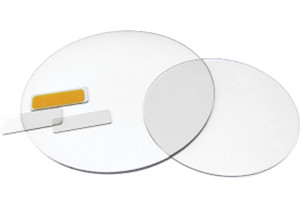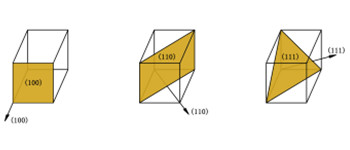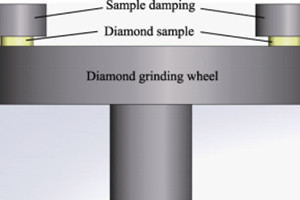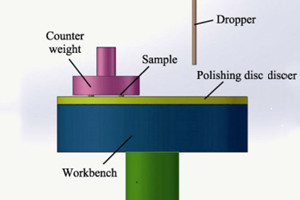
Applications of single crystal diamond wafer
In recent years, the application of chemical vapor deposition (CVD) single crystal diamond in the field of electronics has attracted much attention, thanks to the Progress in single crystal diamond growth technology and semiconductor doping technology. Mature substrate processing technology has always been the basis for the application of semiconductor materials, among which super Precision polishing, as the last step in wafer substrate processing, directly determines the surface roughness and subsurface damage of the wafer.

Commonly used single crystal diamond polishing techniques
At present, the main diamond processing methods include mechanical polishing, thermochemical polishing, tribochemical polishing, laser polishing, ion beam polishing and chemical mechanical polishing.
Due to the anisotropy of diamond, "hard" and "soft" polishing directions have completely different material removal rates.Experimental results show that atomic-level roughness values can be obtained in a shorter time by mechanical polishing in the crystallographic directions <100> and <110> or in another direction deviating from <110> at an angle not exceeding 20°.

1.mechanical polishing diamond wafer
Mechanical polishing is the most traditional diamond polishing method and is currently the only diamond polishing method that has been widely used. During mechanical polishing, the polishing disc rotates at a very high speed (greater than 2500 r/min), exerting great force on the diamond workpiece. Pressure (greater than 10 N), this method uses the mechanical action of diamond abrasive grains to achieve material removal, but the processing efficiency is low and processing damage is easy to occur. Mechanical polishing will cause surface damage and sub-surface damage to the diamond workpiece, and mechanical impact during the polishing process It will lead to the formation of pits, subsurface cracks and lattice damage on the polished surface. These damages cannot be eliminated by subsequent polishing steps and cannot be detected by optical equipment.
In the early stage of mechanical polishing, larger diamond abrasive grains (W10、W5) are used to polish the diamond workpiece in order to obtain a higher removal rate. In the later stage of mechanical polishing, smaller diamond abrasive grains (W2.5) are used in order to achieve a higher removal rate. Obtain a smoother surface to prepare for later chemical mechanical polishing

2.CMP Polishing diamond wafer
Chemical mechanical polishing is a polishing method that combines chemical reaction and mechanical action. Oxidative corrosion and mechanical wear play a major role in the material removal process. Compared with mechanical polishing, chemical mechanical polishing causes less damage to diamond, but the removal rate is usually lower. It is suitable for fine polishing and is often used for polishing CVD single crystal and polycrystalline diamond films.
The chemical mechanical polishing method is an ultra-precision polishing method that uses oxidants to increase the polishing rate. First, the diamond is pressed on the polishing disc and a certain pressure is applied. At the same time, the diamond is immersed in the molten oxidant. The molten oxide will Corrodes diamond and removes the oxidized diamond layer under the mechanical shearing force of the polishing disc to achieve the purpose of polishing

3.Plasma assisted polishing diamond wafer
Plasma assisted polishing, PAP) is a new type of dry chemical polishing method, which first uses Plasma activation of diamond surface, further use of soft abrasives Remove the deteriorated layer.The surface roughness (Sq) of polished diamond can be reduced to 0.13 nm, and the material removal rate can reach 2.1 μm/h, and no residual stress or graphite layer is found on the diamond surface after Raman testing.
4.Ion beam polishing technology
As a non-contact processing technology, the basic principle of high-energy ion beam is to use accelerated inert gas ions to bombard the material surface. Although this method can remove brittle and hard materials on a very small scale, it is easy to leave traces on the substrate surface.
5.dynamic friction polishing
Dynamic friction polishing (DFP) is commonly used to process polycrystalline diamond [and CVD polycrystalline diamond]. Its removal mechanism is to use a catalytic metal disk and diamond to generate friction and heat at high speed, convert diamond into amorphous carbon such as graphite, and use mechanical, diffusion and oxidation to remove the non-diamond phase produced, and finally achieve diamond polishing.
Summarize of diamond polishing method
Diamond is the most promising candidate material for next-generation power devices, and the development of large-scale and high-quality single crystal diamond substrate growth technology and processing technology is the key to diamond's use in the semiconductor field. Application basis. Polishing technology will play an important role in the development of large-sized, high-quality single crystal diamond substrates, including planarization of diamond substrates and pretreatment and polishing of seed crystals before homoepitaxial growth of diamond. At the same time, the polishing quality requirements for the surface of diamond substrates are also gradually increasing, including extreme shape accuracy, nanometer-level surface roughness, and no surface or subsurface damage. The current methods for polishing single crystal diamond include mechanical polishing, chemical mechanical polishing, UV-assisted polishing, dynamic friction polishing and plasma-assisted polishing. These methods have their own advantages and disadvantages.
1.Use a combination of two or more polishing techniques. At present, it is difficult for a polishing technology to combine the advantages of high efficiency, ultra-precision and low damage at the same time.
2.Polishing technology is developing towards high speed, flexibility and green direction. The development of large-size single crystal diamond is a trend, and it is an inevitable requirement that future polishing technology can be applied to large-size single crystal diamond.
3.Mechanical chemical polishing will be the future development direction. Utilizing the mechanical action of hard diamond abrasives and the chemical reaction of reactive soft abrasives will be the development direction of large-size single crystal diamond polishing technology in the future.
Moresuperhard offers resin diamond cutting discs and metal diamond cutting discs specifically for cutting in the glass industry. It can be used to cut glass optical devices such as quartz glass, K9 glass, coated glass, etc. It can also be used to cut various glass tubes, glass spouts, high borosilicate glass tubes, capillary glass tubes, quartz glass, and crystallized glass.
Polyetheretherketone PEEK has excellent comprehensive properties and can replace traditional materials such as metals and ceramics in many special fields. Moresuperhard has developed targeted grinding wheel formulas for the grinding of special engineering plastics such as PEEK, mainly electroplated grinding wheels, divided into rough grinding and fine grinding.
Add: Zhongyuan Rd, Zhongyuan District, Zhengzhou, 450001, Henan, China
Tel: +86 17700605088